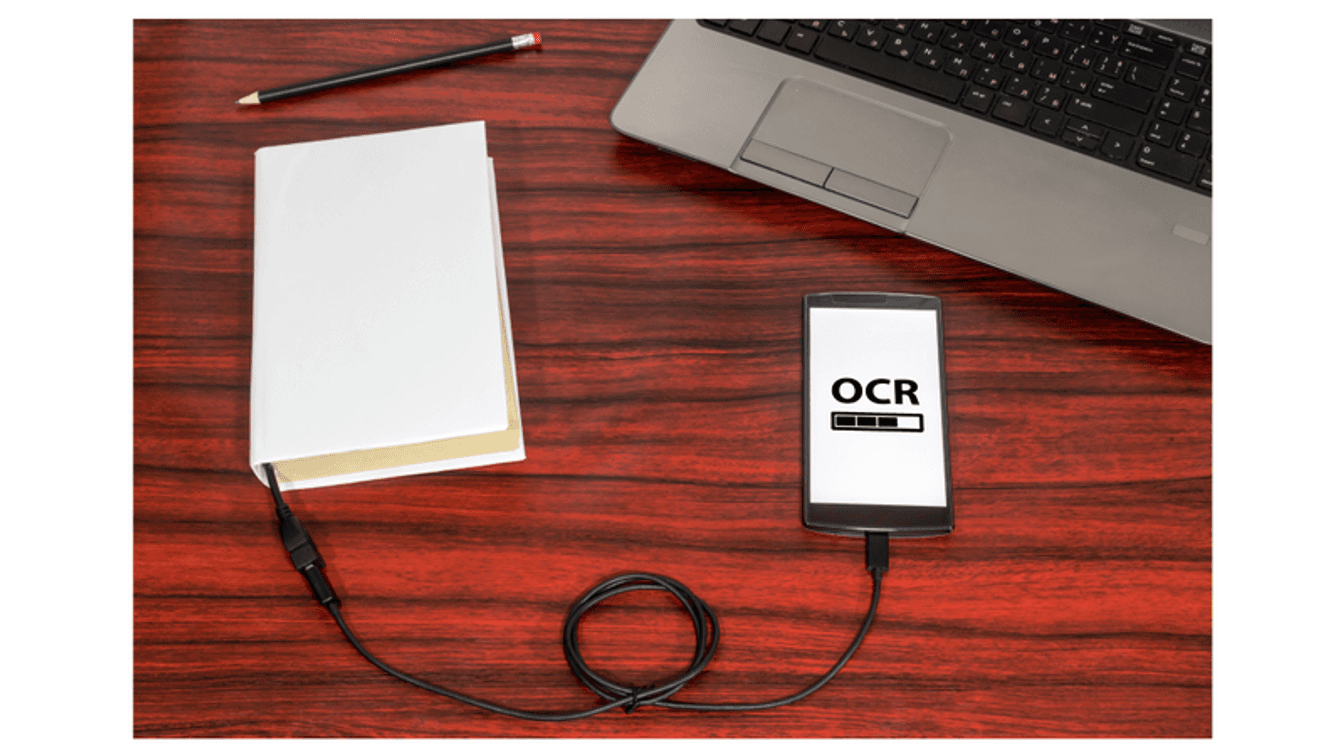
Tech Corner June 21, 2021
The Benefits and Limitations of OCR

Have you ever exported a scanned PDF document into an editable Word file? Then you have used optical character recognition (OCR). This technology excels in identifying text and numeric information in an image, such as a scanned document or pictures, and converts them into a digital format. This, in turn, helps reduce document management and storage, simplifies the search for specific text within a lengthy document, and eliminates the need for costly manual digitization.
Today, businesses and consumers are both taking advantage of OCR. Healthcare providers, which still heavily utilize paper forms, leverage OCR to catalog patient information; accounts payable use of OCR to read employees’ receipts and pay their expenses faster; banking customers can take a picture of a check and get it instantly deposited into their account. And if you’re considering OCR for your business, you need to understand the technology’s strengths and limitations.
What can I digitize for you?
If you mainly deal with images (JPEG, PNG, TIFF) of perfectly static documents, then OCR is probably the best solution on the market today to masterfully convert your scanned files into digital formats. However, not all documents can be easily converted to a digital format. Low quality, bad contrast, wrong size, hand-written information—all of these can pose a challenge to a clean OCR document conversion. If these scenarios are common in your field, you may want to consider a more robust solution.
One trick pony
OCR is usually a part of a more complex workflow automation process, and its most significant benefit happens to be its biggest flaw. The technology simply finds the characters and converts them into a digital format—and that’s it. OCR doesn’t know whether the document it has processed is an invoice or a contract. It also doesn’t group or separate information to further accelerate the processing of the digital document. Simply put: OCR lacks document understanding and intelligence to consolidate the information to enable you to act faster. And since most business processes usually only require a particular piece of data within a document—and not every single detail that is listed on the page—people are still stuck manually searching and extracting the needed information.
OCR+
While OCR as a stand-alone solution may not be ideal, when it’s paired with artificial intelligence (AI) and machine learning (ML) an entirely new set of business-streamlining capabilities get unlocked. With added intelligence to an otherwise simple “conversion,” users can take full advantage of unstructured data workflow automation. The accuracy of targeted data extraction goes up; with added intelligence, the ability to work with other enterprise formats, such as emails, becomes a new reality; targeted, structured data reduces the noise and helps users make better decisions faster.
In summary, if you have a workflow where you only deal with clear scanned images, then OCR alone might be a good fit. However, if you have a workflow that covers other document types, including spreadsheets and emails, a pure OCR solution will likely be pushed beyond its capabilities. And if your workflow requires you to capture targeted data, then OCR won’t get you all the way to the end goal. Unless you add some intelligence.
Let us show you how it works. Request a demo today.
More from the blog
Human-in-the-Loop: The Essential Partnership Powering Successful AI
by Keerti HariharanDiscover why AI still needs human insight. Explore how Human-in-the-Loop (HITL) ensures accuracy, trust, and success in real-world AI workflows.
Alkymi Joins the Kitces AdvisorTech Map and Directory
by Harald ColletAlkymi has been listed in the renowned Kitces AdvisorTech Map & Directory. Joining the industry's most innovative fintech solutions for wealth management.
Alkymi is a Finalist for the FTF News Technology Innovation Awards 2025
by Harald ColletAlkymi has been named a finalist in six categories for the Financial Technologies Forum 2025 Innovation Awards





